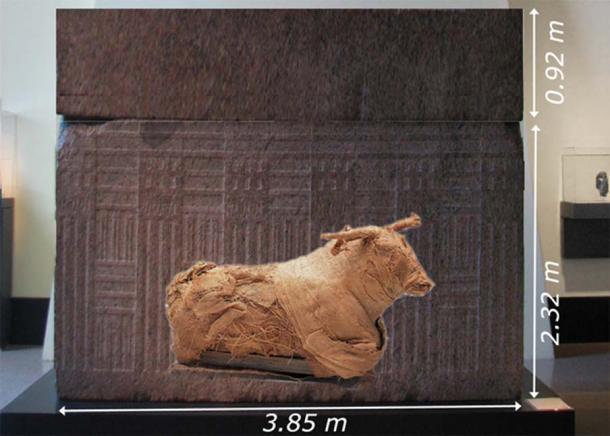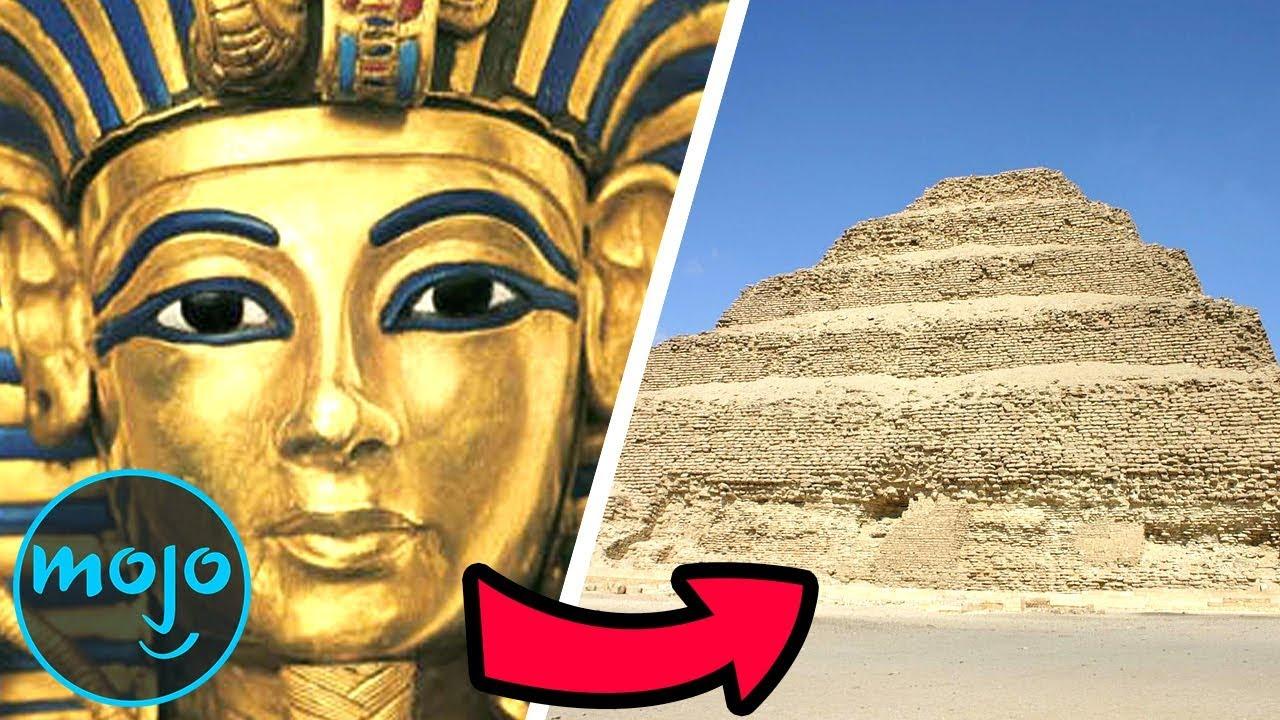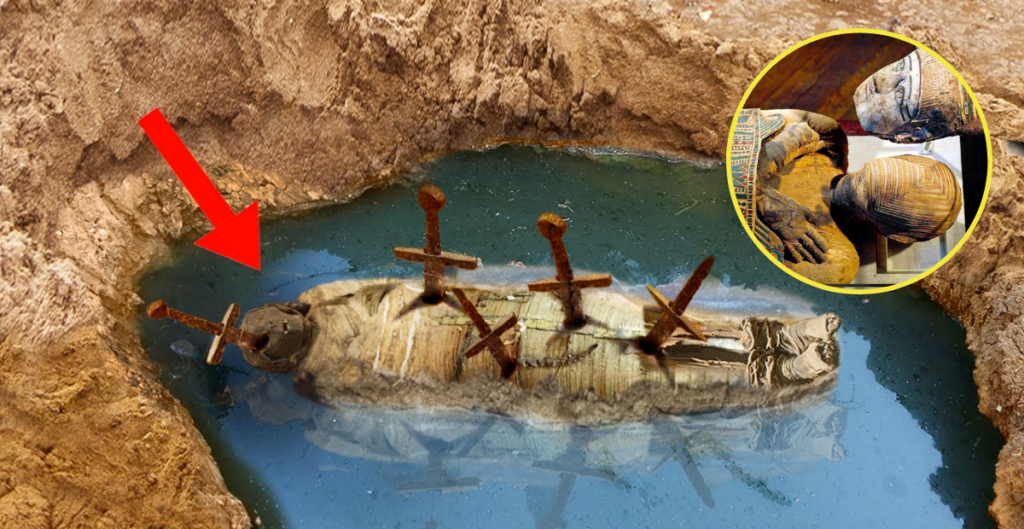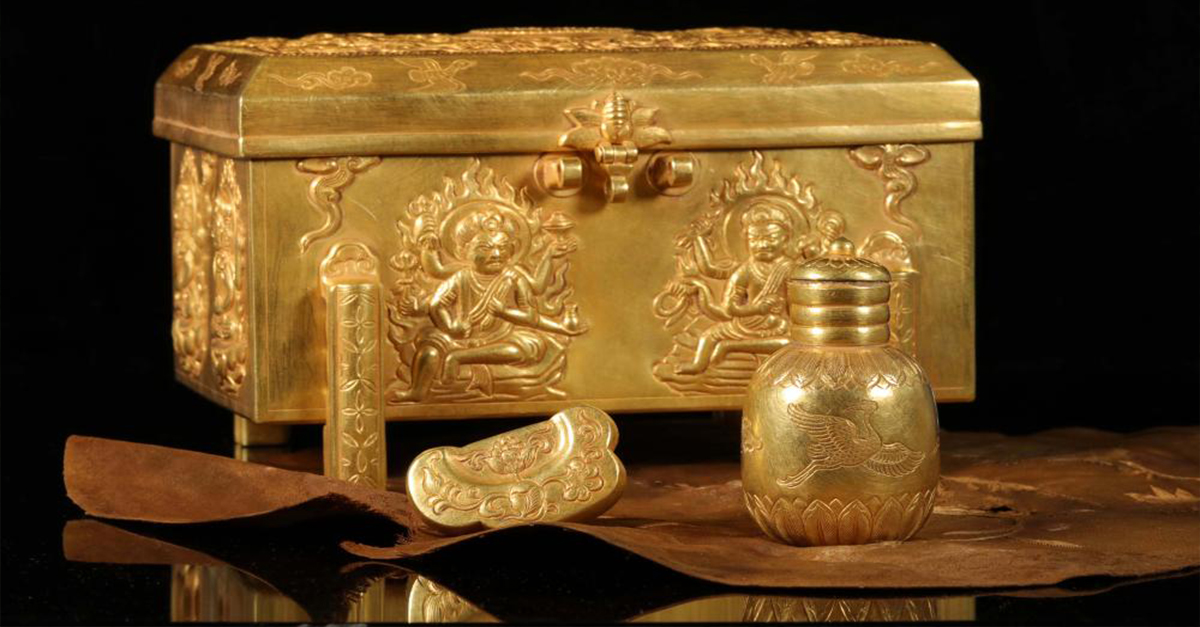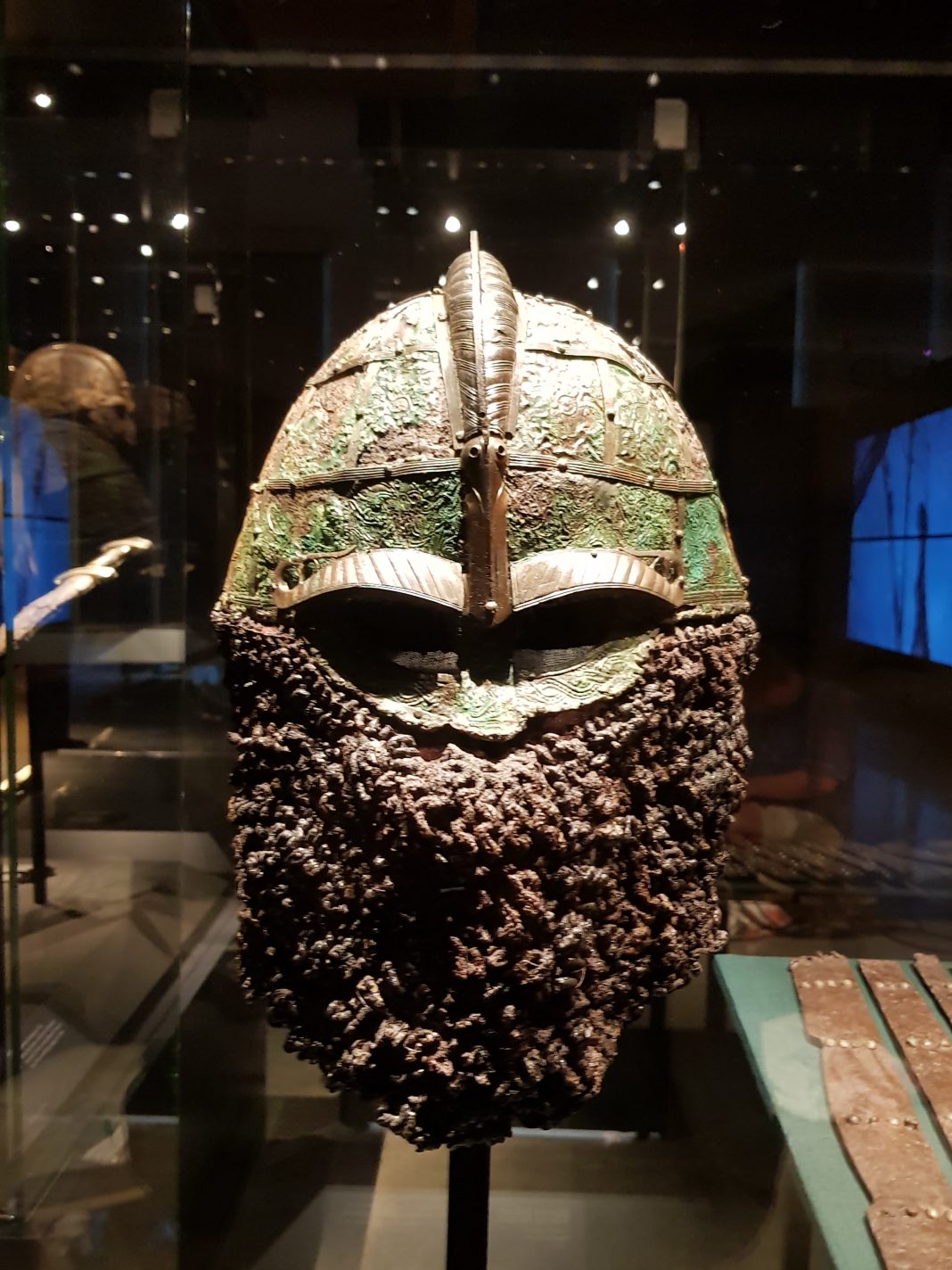
Courtesy of the American Swedish Institute
Minnesota has the largest Scandinavian American population in the United States, according to the Census Bureau. But if it weren’t for the American Swedish Institute in south Minneapolis, the Twin Cities’ handling of Nordic culture might stop at lutefisk, “uff da” and distancing. Think Maypole-surrounding Midsommar, crayfish-covering Kräftskiva (August 23), or last spring’s egg-shaped sauna: ASI demonstrations many degrees further north.
From spring to fall, ASI is now reintroducing Minnesotans to the Vikings, in one of the largest exhibits yet at the museum of Scandinavian history and culture. Ancient Norse sailors did more than plunder, desecrate and binge drink to achieve NFL poster boy status, new research shows.
The Vikings Begin, on display until October 27, features around 40 artifacts dating back about 1,400 years. Excavated from Swedish cemeteries, they contain weapons, jewels, helmets and other riches, and predate the major raids of Norse warriors by several centuries. For the first time abroad, they now fill ASI’s Osher Gallery and Turnblad Mansion. Minneapolis makes the third and final stop of a two-year tour of the United States, after stints in Connecticut and Seattle.
ASI dims the lights, plays epic music, shows videos of actors with cloudy eyes (and research suggests the Vikings did wear eyeliner).
And the effect is disorienting. Minnesotans have the football team, yes, but popular culture has long treated the Vikings as public domain history. We have dressed them in the (discredited) horned helmets of Richard Wagner’s 19th-century operas; He reduced them to the Sunday comic barbarism of Hägar the Horrible ; and adapted what we know of their spirituality for the Marvel Comics universe, while clumsily lumping them together with the tagline “rape and plunder.”
Despite that ubiquity or because of it, the exhibition, on loan from Gustavianum, the Uppsala University Museum in Sweden, makes the Vikings seem real for the first time.
“The main error, greatly accentuated by the television series and other representations, is that brutality and cruelty were its basic characteristics,” says Gustavianum director Mikael Ahlund. ( Vikings , the History Channel’s Netflix show, prides itself on nailing down details, but also exaggerates medieval violence.) “This has prevented many people from seeing and understanding the sophistication of their society.”
Researchers have also overlooked that sophistication, according to the three archaeologists who recently evaluated the artifacts on display. The Vikings left no written history, no religious texts, or trade records. We have finds of burial sites, as well as ancient Norse runes, as well as biased accounts from the Anglo-Saxons, in which ecclesiastics describe hellish raids on unprotected monasteries.
If scholars have attempted to fill in the gaps since the 1970s or so, they left key work unfinished: Gustavianum’s assets, which have existed since the 1920s, have escaped modern analysis until now.
“We have a new opportunity to [reexamine the exhibition materials], with DNA and other analytical methods,” says Emma Hock, curator of the Gustavianum and director of the exhibition. “So it’s also a very exciting time for the University.”
Who were (or weren’t) the vikes? This is what we discovered.
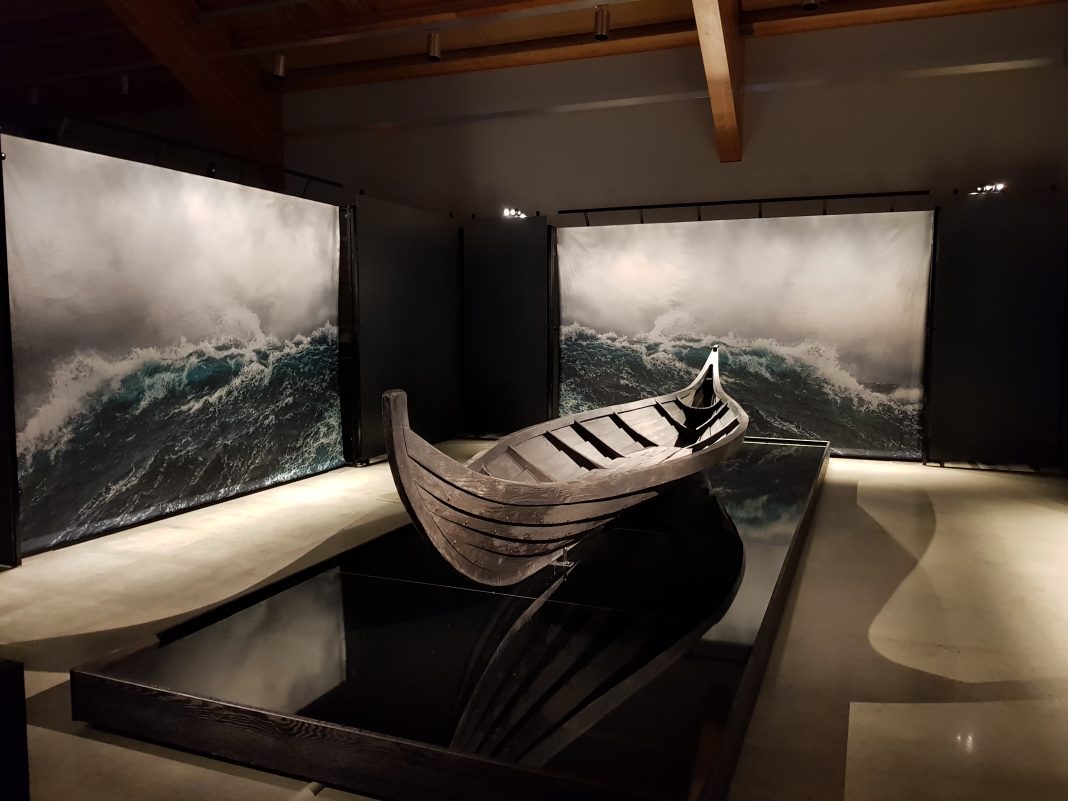
Boat installation
Courtesy of the American Swedish Institute
Masculine, Maritime and Violent
I men
Price divides the Viking stereotype into three parts: “masculine, maritime and violent.”
And the Gustavianum team’s adjustments to that stereotype are about subtleties, at least at first. Visitors enter ASI’s Osher Gallery, surrounded by wall-sized images of stormy seas. In the center, a boat installation replicates the type the pre-Vikings used in burials, where the artifacts on display would have appeared.
In addition to weapons and tools, the warrior could have gone down with horses, dogs, sheep, goats and pigs, enough to surround him or, significantly, her , with a collection of skeletons, as seen in photographs of the Turnblad Mansion.
We know “or she” thanks to genomic data: In 2017, Charlotte Hedenstierna-Jonson, another of three Gustavianum archaeologists, reclassified the remains of an eminent Viking warrior, buried with weapons and two horses, as biologically female, not male. , like long thought.
“We often think that Vikings are just men. This is wrong,” says Price, “at least if we are talking about Scandinavians in general. “Women could travel as far and have as much battle mentality as men.”
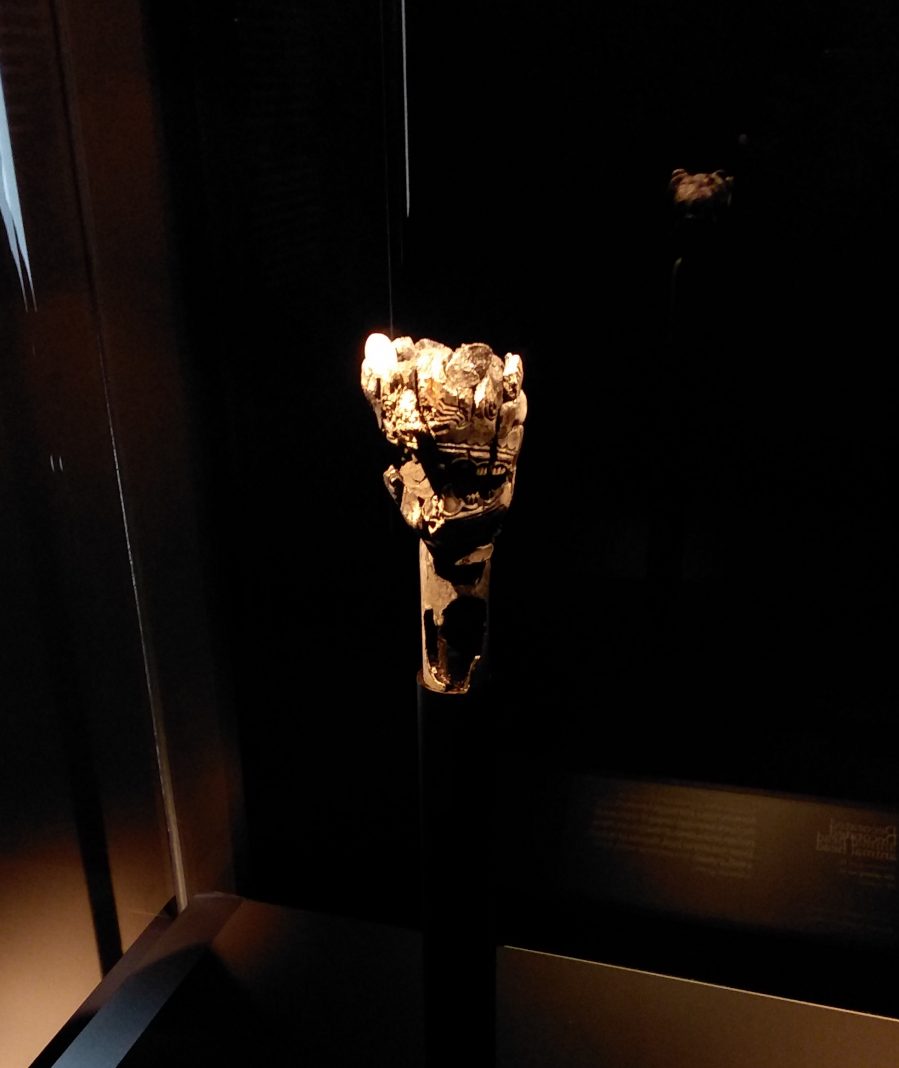
Walking stick with animal head
Photo by Erik Tormoen
Women also took control outside of the fights. “Whether as queen of the land or ruler of a house, women exercised power, especially in the absence of their partner,” Price notes.
Still, in male-dominated Viking society, most women would remain on the farm. The genders were never completely equal, according to Price.
The artifacts in No Vikings Begin directly invoke those battle-minded women, but a peculiar aspect of their influence comes through a more ethereal channel: an animal-headed staff probably served a type of priestess, Price says. The Vikings seem to have considered women closer to the spirit realm, with competence over death and the future.
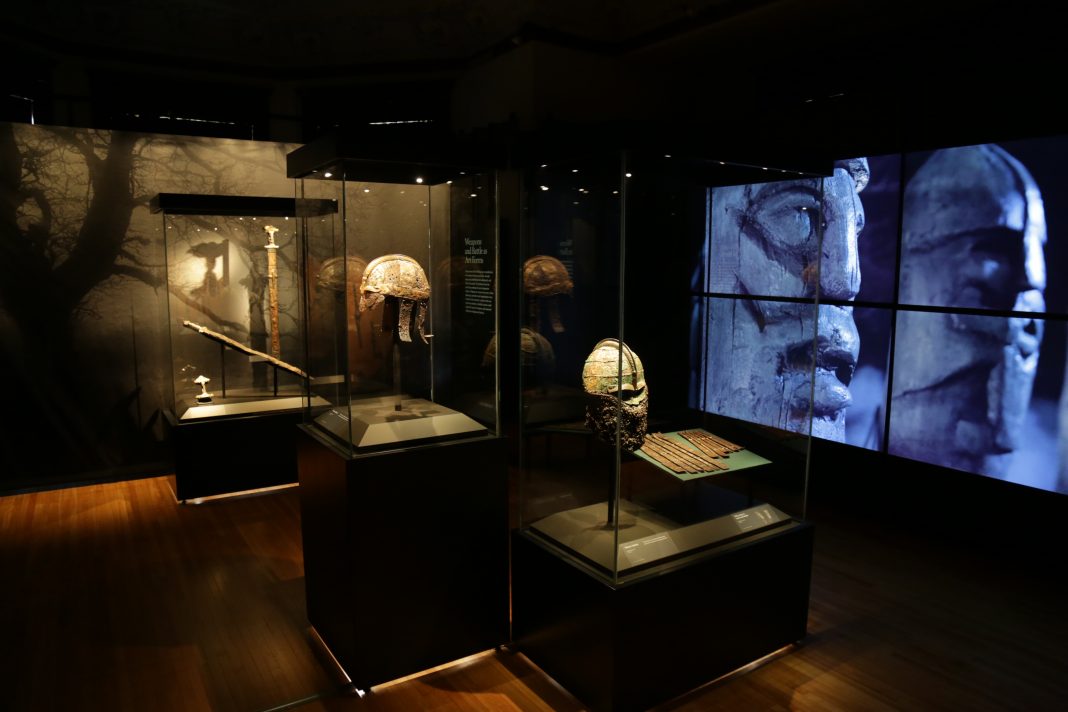
“The Vikings Begin” takes visitors through the Osher Gallery and the Turnblad Mansion in south Minneapolis
Courtesy of the American Swedish Institute
II. Violent
When it comes to brutality, there is less to correct. “We shouldn’t try to emulate or admire these guys,” Price says. “The Vikings, or their Vendel [pre-Viking] predecessors, were not heroes at all.”
Arriving by sea and waterways, the assailants used the element of surprise as a weapon. Price describes Viking culture as a “strong arm,” which eventually “disintegrated into civil war, famine, and slaughter.”
But why did they become so violent? The answer is surprisingly relatable.
Scandinavian economies long depended on agriculture, hunting and fishing. But then, around the year 550, two volcanoes exploded.
The eruptions spewed enough material into the atmosphere to block out the sun for more than a year. The temperatures dropped. Agriculture withered. Suddenly, the Scandinavians faced a kind of climate change. Less identifiably, historians believe this wiped out 50% of its population.
Around that time, Scandinavia also gained new neighbors. The Roman Empire collapsed and the Huns rampaged. Across the continent, trade routes were reshaped, technology advanced, and wealth spread. Raiding meant easy access to gold, slaves, and control of trading resources, not to mention new land for farming.
The Baltic region, east of Sweden, was a good testing area, where the pre-Vikings perfected their travel and raiding techniques for several hundred years. In the Viking period (approximately from the 8th to the 11th century), they had rationalized weaponry.
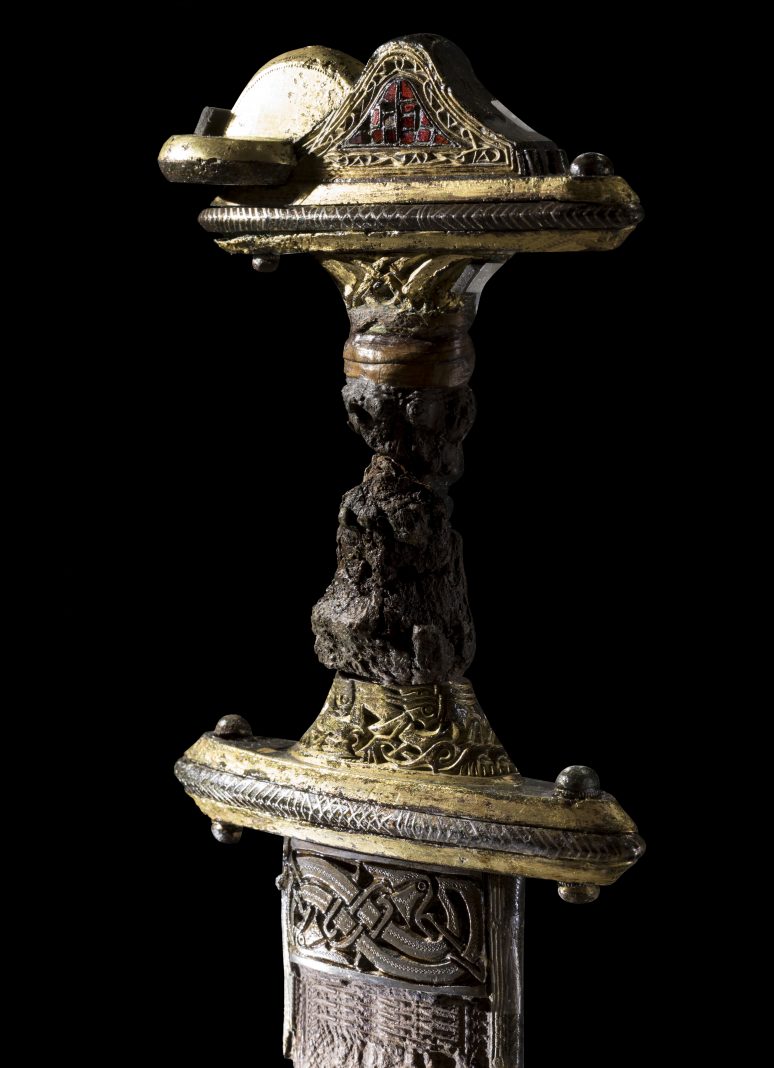
Sword
Photo by Mikael Wallerstedt/UPPSALA UNIVERSITY
But before that, weapons inspired deep craftsmanship, as seen in Vikings Begin . “Every time I look at all the work that went into the handle of a sword, or the leather sheaths, with embossed leather, with little stitching, the complexity involved and the workmanship to produce such a decorated object that is then buried with the individual, it’s really remarkable,” says Hock.
Combat practice had made its way into everyday life. A martial hierarchy turned warriors into kings and queens. “Here there was also organization, skills and social structures for violence,” writes Hedenstierna-Jonson, in a book accompanying the exhibition.

viking shield
Photo by Erik Tormoen
On display, the handle of an enormous sword shines with tiny rubies. A piece of floating hull has fossilized grooves, imprinted by a bundle of arrows. A shield, too large for battle, was probably sitting, propped up, for show. Brass helmets hid faces behind curtains of chain mail, more sensible than Wagnerian horns.
Price, on the press tour, described engravings carved into the domes of some pre-Viking helmets. Glowing when they caught the light, the pictographs would have appeared to move, “crawling” across the Viking’s scalp.
It makes sense that the Vikings counted honor, glory and loyalty among their ideals, according to runic research. Dependence on agriculture eased and aristocratic warriors flaunted their weapons and jewels. The pre-Vikings built mounds on funeral pyres. They began to bury their best in boats.
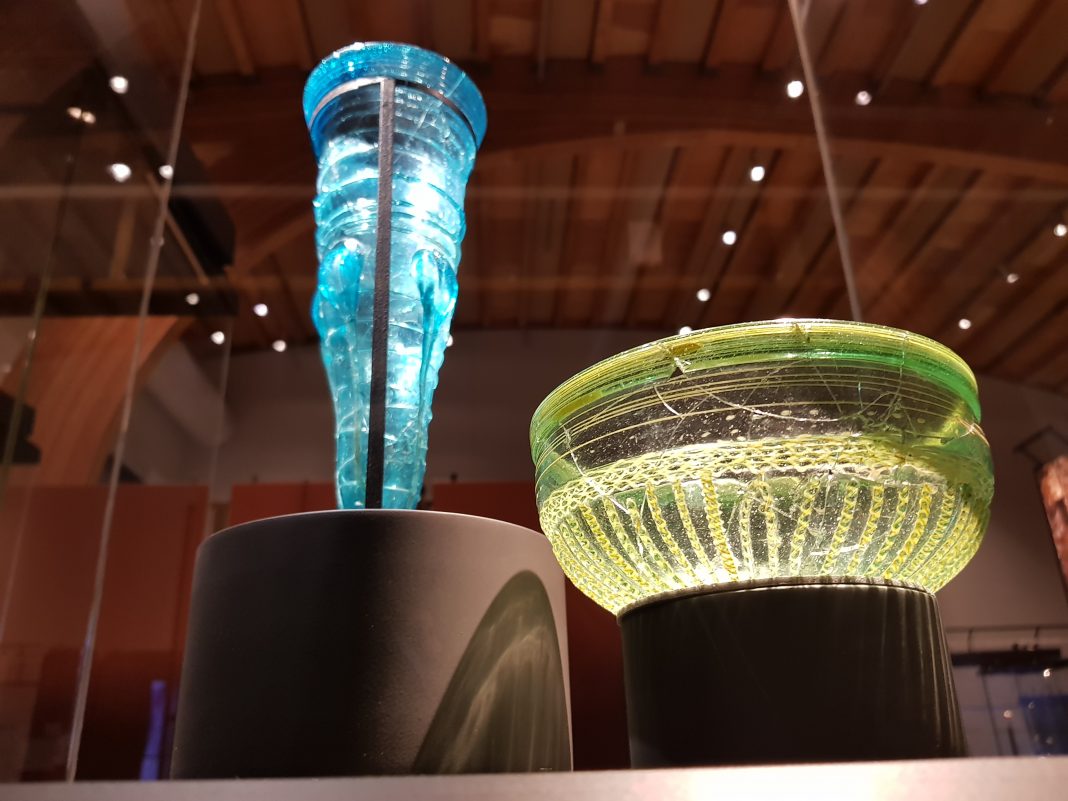
Italian glassware found in ship graves
Courtesy of the American Swedish Institute
III. Maritime
Which brings us to the third cliché: “maritime.”
There is a strong consensus here: the ancient Norsemen were excellent sailors. Centuries before they became Vikings, they colonized the Baltic Islands and built ships of various designs. The sagas refer to “sunstones” or sundials used in navigation.
A softer side also emerges in the Vikings’ foreign relations: although harsh, they also dabbled in diplomacy and engaged in trade.
“A much more interesting perspective is that trade, rather than violent raids, was the main driving force of their far-reaching travels,” Ahlund says. So far, pre-Vikings would encounter people from at least 52 contemporary cultures.
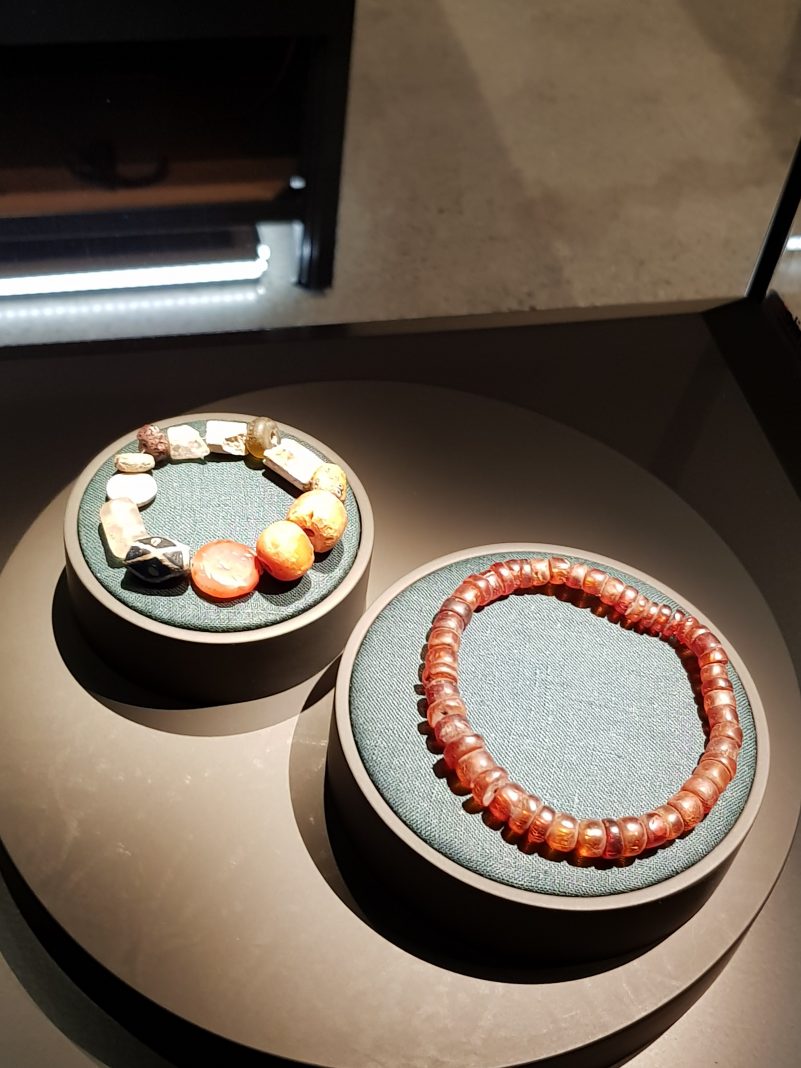
Viking jewelry, including amber beads (right)
Courtesy of the American Swedish Institute
Vikings Begin offers evidence of these deals: in addition to amber beads made in Scandinavia, an imported variety is wound along a Norse metal necklace. The technicolor glass bowls come from northern Italy. Arab coins demonstrate contact with the Middle East. Brass measuring scales, pocket-size for travel, would have contributed to fair exchange during ventures reaching the Silk Road.
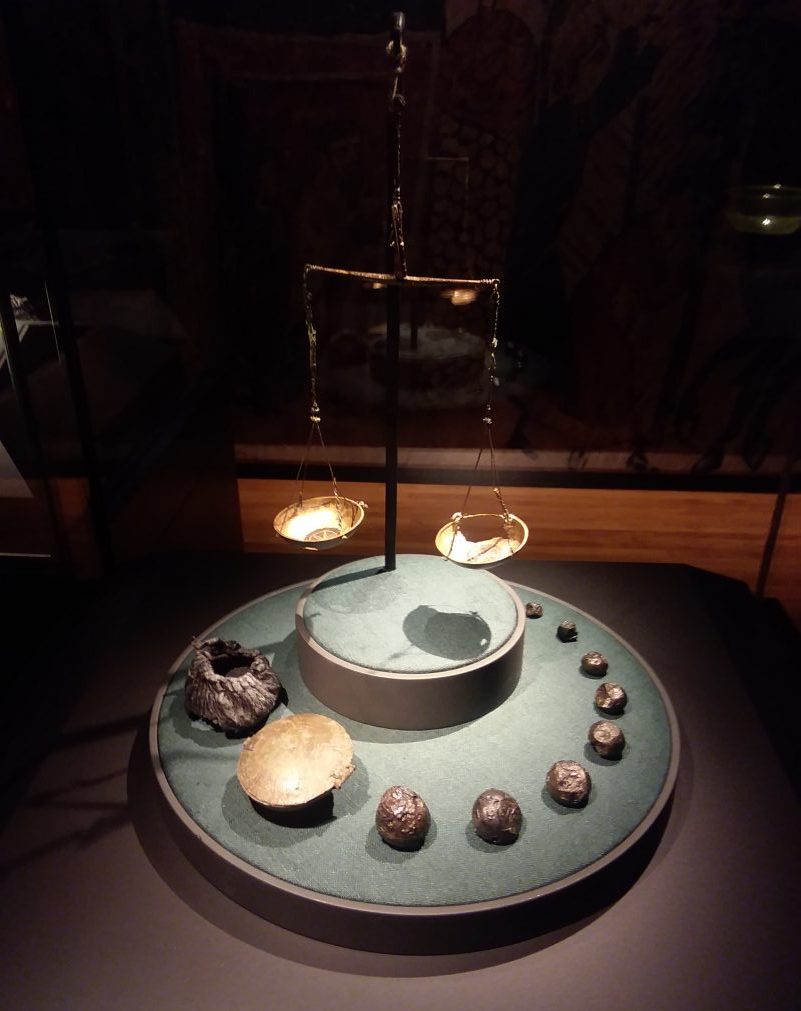
Scales
Photo by Erik Tormoen
Immigrants arrived in the new pre-Viking centers and cultures mixed. “One can only imagine the polyglot of languages that might have been heard on the streets of a commercial city,” Price writes.
Price continues in the book that, moving regularly to and from distant lands, the pre-Vikings traveled “as pirates, mercenaries and, later, effectively as soldiers on military campaigns; as politicians, diplomats and envoys; as settlers, settlers, as people in search of a new life; and yes, even as explorers, true adventurers who travel through an unknown horizon.”
Eventually, their sailing experience took them to North America, the first known Europeans to reach there. (They probably didn’t publish in what is now Minnesota, as some claim, but more on that later.)
In the end, the Gustavianum team even goes so far as to call the Vikings one of the most cosmopolitan and tolerant cultures of the European past.
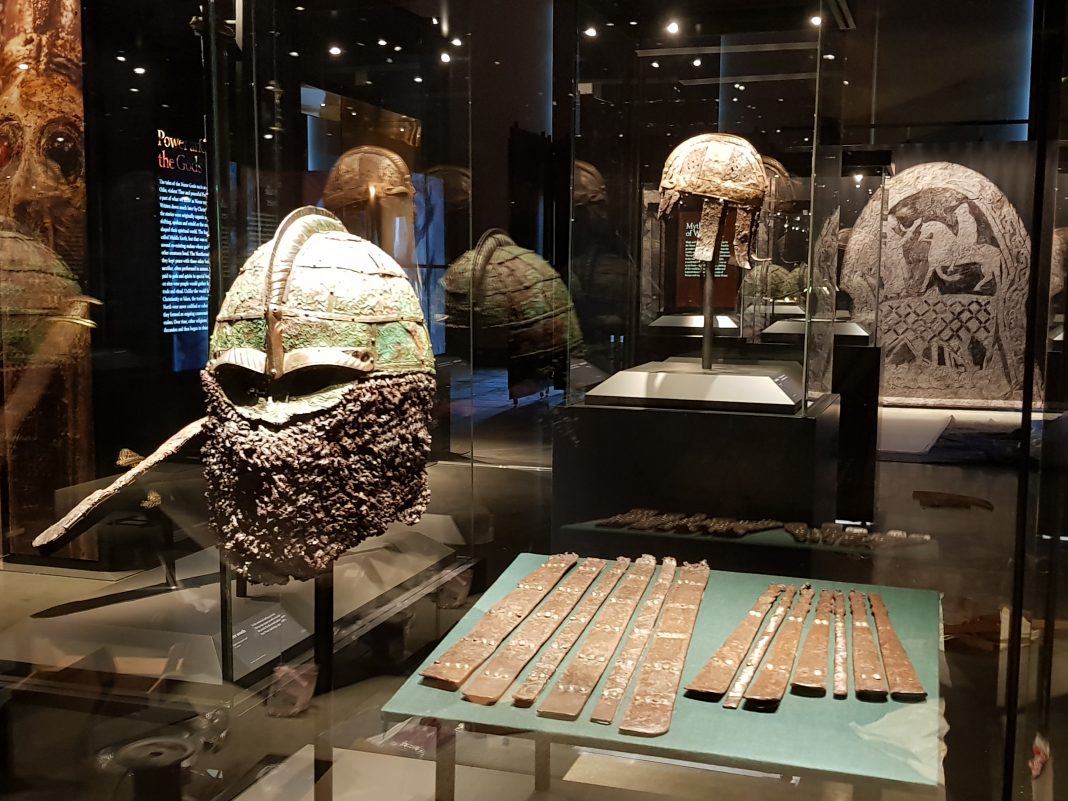
“The Vikings Begin” at the American Swedish Institute runs through October 27
Courtesy of the American Swedish Institute
Raids will be televised
After walking through Vikings Begin , it’s tempting to return home and activate some of the Vikings programming that Ahlund warned against. We have a lot of that: a pagan invasion of streaming services.
Of note: the grim, action-packed TV drama The Last Kingdom ; the ridiculous Norwegian comedy Norsemen , The Office Meets History Channel; the documentary-style educational game with defensive title Real Vikings .
And the History Channel’s Vikings on Netflix is popular for the same reasons as Game of Thrones . There are epic soap opera twists. Strong and compelling female characters. Transporting medieval theatricality. Cool fashions.
Vikings follows the myth of Ragnar Lodbrok, from Old Norse poetry. At ASI, the video projections don’t look too far away, visually, from the History Channel show. Jeweled and braided, the Vikings were more “Johnny Depp than Vin Diesel,” as National Geographic recently put it.
Critics have complained about the ways in which the Vikings disparage and flaunt facts. Women warriors have precedent, as mentioned above. Also true to history, the Vikings sow violence. But because entertainment favors average viewers over academics, there are some irritations. If we have corrected our understanding of the sex of a Viking warrior, for example, that does not mean that we have understood Viking views on gender. Socially active women, while interesting for Viking society, also contribute to the script of 2019.
“I’m generally very reluctant to extract messages from the past for the present,” says Price, of pre-Viking research. “Even the apparent positives (a relatively egalitarian perspective on women’s rights, for example) have often been exaggerated, and we must be careful not to project our contemporary values onto a past that unfortunately did not always share them.”
Combining ancient and modern, at worst, is downright toxic. Certain white supremacists have demonstrated this, claiming that the Vikings have racist aims (and some observers loosely link the phenomenon to the popularity of the Vikings ).
In May 2017, a white supremacist posted “Hail Vinland!!! Acclaimed victory!!!” on Facebook days before killing two people in Portland, Oregon: “Vinland” refers to a part of North America supposedly inhabited by Leif Erikson. In March, a white supremacist in New Zealand killed 50 Muslim men, women and children. His attempt to attract media attention, in a “manifesto”, made reference to medieval religious wars and used the symbol of a black sun, Sonnenrad, linked to ancient Norse cultures.
The propagandist theft of the Sonnenrad dates back to German nationalism, when Nazi scholars, threatened by Germany’s waning power, traced an ascendant white Germanic race to the Viking expansion.
But expansion , Price would point out, is not the right word. That term “has connotations of deliberation and process.” The diaspora best captures gradual, exploratory raiding, trade, and colonization, with the Vikings’ widespread influence being “ the unintended result of numerous interlocking movements and interactions…resulting in a variety of equally unforeseen long-term legacies.”
Ironically, it was assimilation that helped the Vikings cope with their own time of international stress and change, according to the Gustavianum team. They became multicultural, and Vikings Begin presents them as open and adaptable: the type who would hoard foreign wealth gained through trade; that they would even bury their dead with them.
Minnesota Myths
I couldn’t leave the exhibit ( and I can’t close this article) without considering how Minnesotans might interpret the findings. After all, the state has had its own role in creating Viking myths, and residents stand up for their own rights.
To wit: In the ’70s, a Mankato High School guidance counselor built a dragon-headed longship that sliced through the waves toward Norway before docking in Moorhead, in a museum where you can see it today. US Bank Stadium, which dominates the Minneapolis skyline, and the Sculpture Garden’s “Spoonbridge and Cherry,” which defines the subway, evoke the curve of a longship’s bow. The NFL’s state mascot featuring Hulk Hogan, of course, personifies the trope of the male marauder. And the first weekend of this year’s Minnesota Renaissance Festival featured the theme “Bold North Vikings Invasion,” fusing the state’s patented Super Bowl slogan “Bold North” with spicy dish-eating and longbow competitions, plus a horned helmet logo.
However, state appropriation has not always seemed like a braid of thread. In fact, Vikings Begin recalls a more poignant example, from the late 19th century.
Back then, shortly after statehood, a Swedish immigrant farmer near the west-central settlement of Kensington supposedly discovered a stone slab riddled with Scandinavian runes from the 14th century. In other words: “The Vikings were here.”
Scholars have dismissed the Kensington Runestone as a hoax. But when Olof Ohman drew attention to that chunk of sandstone, he tapped into something bigger. The fellow Scandinavians who arrived had difficulty assimilating. The slab seemed to show belonging. It served as a point of ethnic pride, according to historical accounts.
Indeed, Vikings Begin does the opposite. Instead of self-identification, there is distance, archeology and ancient history.
“I don’t know how to talk about this idea of pride in heritage, because it’s so different for each individual,” says Erin Stromgren, ASI exhibition manager, “but I don’t see [ASI] presenting this as, ‘This is the history of the Scandinavian people’, in that kind of triumphant voice.” Rather, they’re saying, “Hey, let’s look at the history of this place, the people who lived there, and what was shaping them as individuals,” he says.
Minnesotans have flocked to ASI after receiving 23andMe results, but visitors don’t need to be of Scandinavian ancestry, emphasizes Karen Nelson, marketing and communications manager. “What [ASI has become], over the last five to 10 years, is more of a neighborhood gathering place,” he says, pointing to ASI’s collaborations with nearby schools and sounding like an article with the findings of the Gustavianum team on the Viking spirit. “We are part of the neighborhood and the neighborhood is very diverse.”
This year’s Cocktails at the Castle event, at the mansion on September 13, follows the Vikings’ lead and bridges that gap a bit, as ASI has done for decades. See: rune carving demonstrations, falconry lessons. Bowls of beer, fresh off the wheel, would be passed from mouth to mouth in rural Scandinavia. An all-female music lineup includes Half Tramp, Monica LaPlante, Aby Wolf and DJ Pink Rink. And a prize will be awarded for the best Viking costume.
Just leave your horned helmet (and your preconceptions) at home.
